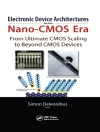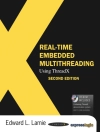The ultimate handbook on microwave circuit design with CAD. Full of tips and insights from seasoned industry veterans, Microwave Circuit Design offers practical, proven advice on improving the design quality of microwave passive and active circuits-while cutting costs and time. Covering all levels of microwave circuit design from the elementary to the very advanced, the book systematically presents computer-aided methods for linear and nonlinear designs used in the design and manufacture of microwave amplifiers, oscillators, and mixers. Using the newest CAD tools, the book shows how to design transistor and diode circuits, and also details CAD’s usefulness in microwave integrated circuit (MIC) and monolithic microwave integrated circuit (MMIC) technology. Applications of nonlinear SPICE programs, now available for microwave CAD, are described. State-of-the-art coverage includes microwave transistors (HEMTs, MODFETs, MESFETs, HBTs, and more), high-power amplifier design, oscillator design including feedback topologies, phase noise and examples, and more. The techniques presented are illustrated with several MMIC designs, including a wideband amplifier, a low-noise amplifier, and an MMIC mixer. This unique, one-stop handbook also features a major case study of an actual anticollision radar transceiver, which is compared in detail against CAD predictions; examples of actual circuit designs with photographs of completed circuits; and tables of design formulae.
Inhoudsopgave
Foreword by David Leeson.
Preface.
1. RF/Microwave Systems.
2. Lumped and Distributed Elements.
3. Active Devices.
4. Two-Port Networks.
5. Impedance Matching.
6. Microwave Filters.
7. Noise in Linear Two-Ports.
8. Small- and Large-Signal Amplifier Design.
9. Power Amplifier Design.
10. Oscillator Design.
11. Microwave Mixer Design.
12. RF Switches and Attenuators.
13. Microwave Computer-Aided Workstations foor MMICRequirements..
Appendix A: BIP: Gummel-Poon Bipolar Transistor Model.
Appendix B: Level 3 MOSFET.
Appendix C: Noise Parameters of Ga As MESFETs.
Appendix D: Derivations for Unilateral Gain Section.
Appendix E: Vector Representationof Two-Tone Intermodulation Products.
Appendix F: Passive Microwave Elements.
Index.
Over de auteur
GEORGE D. VENDELIN, ENGEE, is a technical consultant with more than
forty years of microwave engineering design and teaching
experience. His clients include Texas Instruments, Anritsu, Ford
Aerospace/Loral Space & Communications/Lockheed Martin,
Litton/Filtronics, and many others through his consulting firm,
Vendelin Engineering. He is the author of Design of Amplifiers and
Oscillators by the S-Parameter Method (Wiley). He is an adjunct
professor at Stanford University, Santa Clara University, San Jose
State University, and the University of California,
Berkeley-Extension.
ANTHONY M. PAVIO, PHD, is the Manager of the Phoenix Design
Center for Rockwell Collins, which is focused on the development of
advanced high-density military products. He was previously the
manager of Integrated RF Ceramics Center for Motorola Labs,
specializing in the development of highly integrated LTCC modules.
Dr. Pavio was also a technical director of the microwave products
division of Texas Instruments.
ULRICH L. ROHDE, PHD, Dr.-ING, is Chairman of Synergy Microwave
Corporation; a partner of Rohde & Schwarz, a firm specializing
in test equipment and advanced communications systems; and
Professor of Microwave and RF Technology at the Technische
Universität Cottbus, Germany.












